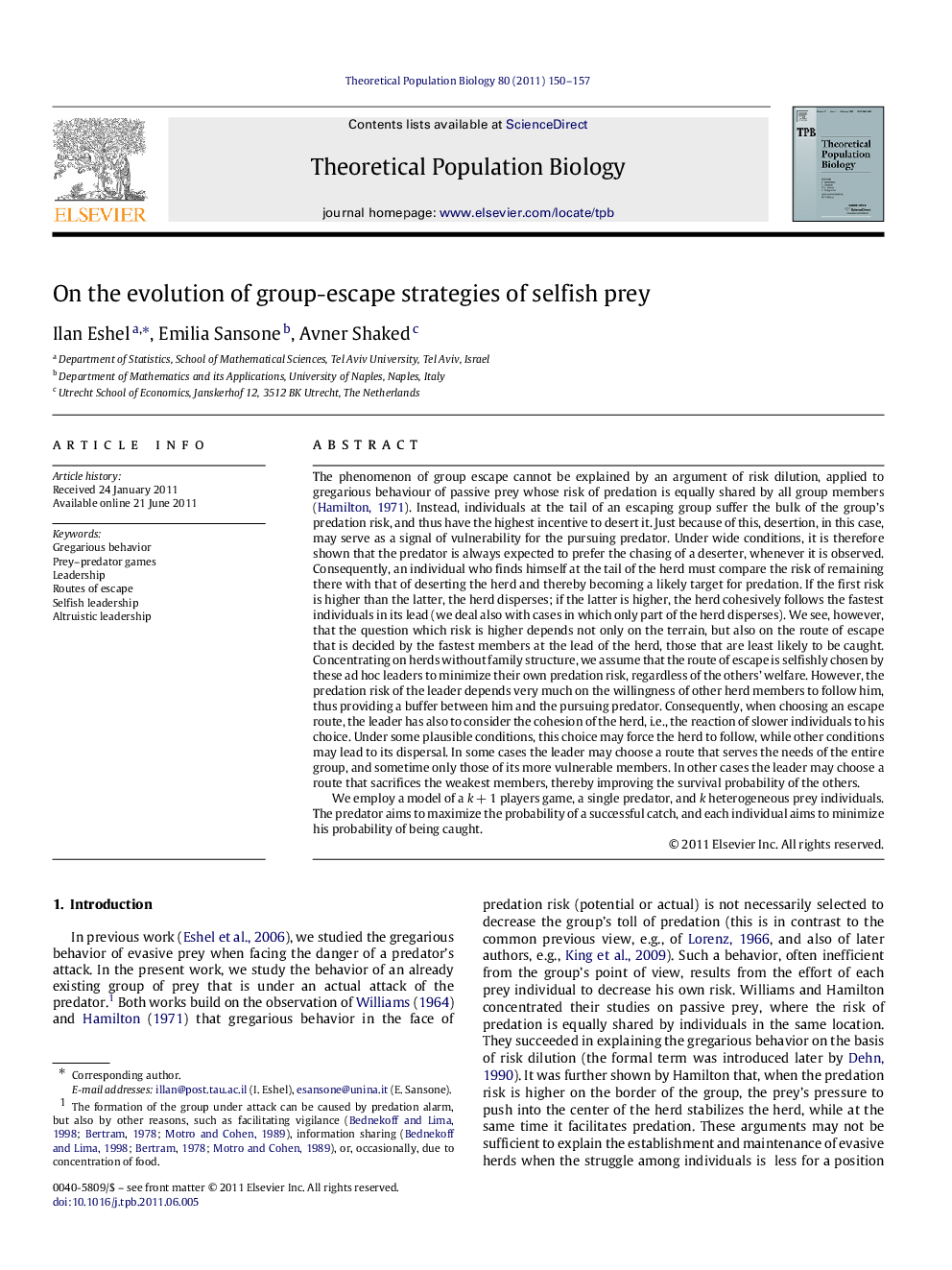| کد مقاله | کد نشریه | سال انتشار | مقاله انگلیسی | نسخه تمام متن |
|---|---|---|---|---|
| 4502560 | 1320578 | 2011 | 8 صفحه PDF | دانلود رایگان |

The phenomenon of group escape cannot be explained by an argument of risk dilution, applied to gregarious behaviour of passive prey whose risk of predation is equally shared by all group members (Hamilton, 1971). Instead, individuals at the tail of an escaping group suffer the bulk of the group’s predation risk, and thus have the highest incentive to desert it. Just because of this, desertion, in this case, may serve as a signal of vulnerability for the pursuing predator. Under wide conditions, it is therefore shown that the predator is always expected to prefer the chasing of a deserter, whenever it is observed. Consequently, an individual who finds himself at the tail of the herd must compare the risk of remaining there with that of deserting the herd and thereby becoming a likely target for predation. If the first risk is higher than the latter, the herd disperses; if the latter is higher, the herd cohesively follows the fastest individuals in its lead (we deal also with cases in which only part of the herd disperses). We see, however, that the question which risk is higher depends not only on the terrain, but also on the route of escape that is decided by the fastest members at the lead of the herd, those that are least likely to be caught. Concentrating on herds without family structure, we assume that the route of escape is selfishly chosen by these ad hoc leaders to minimize their own predation risk, regardless of the others’ welfare. However, the predation risk of the leader depends very much on the willingness of other herd members to follow him, thus providing a buffer between him and the pursuing predator. Consequently, when choosing an escape route, the leader has also to consider the cohesion of the herd, i.e., the reaction of slower individuals to his choice. Under some plausible conditions, this choice may force the herd to follow, while other conditions may lead to its dispersal. In some cases the leader may choose a route that serves the needs of the entire group, and sometime only those of its more vulnerable members. In other cases the leader may choose a route that sacrifices the weakest members, thereby improving the survival probability of the others.We employ a model of a k+1k+1 players game, a single predator, and kk heterogeneous prey individuals. The predator aims to maximize the probability of a successful catch, and each individual aims to minimize his probability of being caught.
Journal: Theoretical Population Biology - Volume 80, Issue 2, September 2011, Pages 150–157